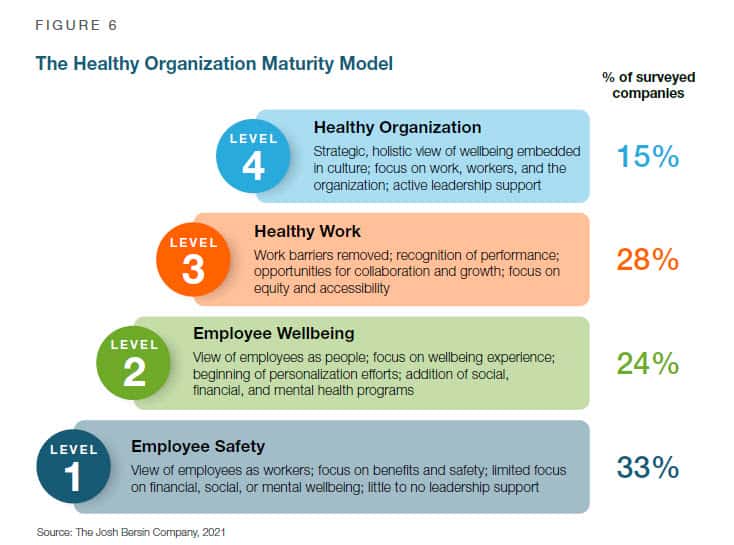From The Great Resignation To The Great Migration
Much has been written about The Great Resignation, the trend for over 3.4% of the US workforce to leave their jobs every month. Yes, the trend is real: companies like Amazon are losing more than a third of their workers each year, forcing employers to ramp up hiring like we have never seen before. (The trending hashtag in TikTok is now #quitmyjob.)
 But while we often blame the massive quit rate on the Pandemic, let me suggest that something else is going on. This is a massive and possibly irreversible trend: that of giving workers a new sense of mobility they’ve never had before.
But while we often blame the massive quit rate on the Pandemic, let me suggest that something else is going on. This is a massive and possibly irreversible trend: that of giving workers a new sense of mobility they’ve never had before.
Consider a few simple facts. Today more than 45% of employees work remotely (25% full time), which means changing jobs is a simple as getting a new email address. Only 11% of companies offer formal career programs for employees, so in many cases, the only opportunity to grow is by leaving. And wages, benefits, and working conditions are all a “work in process.” Today US companies spend 32% of their entire payroll on benefits and most are totally redesigning them to improve healthcare, flexibility, and education.
Our new Healthy Organization Research found that this is a big area of investment. Today only 13% of companies survey employees to understand what they need and only 18% actively manage and optimize workloads to remove stress. (Report here.)
So what’s going on?
This is not a Great Resignation, it’s a Great Migration.
Employees are migrating from “crummy jobs” to “better jobs” and from “companies that don’t seem to care” to “companies that really really care.” And for many workers this means moving to companies with opportunities for growth, promotion, and even a new industry.
We call these companies “Irresistible Organizations,” and our research found that about one in 7 are there today.
 |
So workers, many of whom have been freed from their desks and long commutes, are simply voting with their feet (their virtual feet.)
I don’t think this is going away. For years companies have been debating what to do about employee engagement and retention as if it’s a sideline problem for HR to worry about. Today this is a CEO-level issue and a new breed of leaders is going to learn that taking care of employees is the number one thing executives must do.
Consider the following facts. Today more than 90% of all jobs in the US (including even truck drivers) are service-centered jobs. In other words, they add value through their human touch, care, consideration, or ingenuity. This means that every company, regardless of your industry, is essentially in the people business.
Second, with more than 14 million jobs open and a US workforce of around 160 million people, you already are missing almost one in ten workers for your company. Research from Citibank predicts that as many as ten million new jobs will be created from the US Infrastructure and Build Back Better programs, so next year it may be one in eight. In other words, if you walk down the hall in your office and count desks, every eight desks is a vacant seat.
Third, the financial return on investment in people is higher than ever. Amazon.com is planning on spending $4 Billion on hiring in Q4 alone (just to maintain their on-time delivery brand) and they aren’t even trying to improve retention. If they can afford to do this, you can too.
What does this mean for the future?
You have to run your company as if every employee has one foot out the door. It’s time to ramp up your Employee Experience program, focus managers on listening and supporting people, and seriously invest in career pathways and internal growth for your staff.
This is why new solutions like the Talent Marketplace, Capability Academies, Talent Intelligence Platforms, and Learning in the Flow of Work are so hot. Without an internal strategy for mobility and development, people just “mobilize” right out the door.
The Great Resignation is not just an interesting trend from the pandemic. It’s a permanent and long-lasting change in our workforce. And it’s one that’s good for workers and wages, but will put many employers under stress.
What Should You Do?
First, take employee experience seriously. This is not some fad that came along with Zoom and Teams, it’s an existential change in the way you manage people, and we have an entire assessment and body of research to help.
Second, focus attention on your employee brand. Recruiting today is heavily dependent on your reputation, so if your people are leaving or your company isn’t well-positioned, I can guarantee your talent pipeline is weak. Even big companies like Facebook, who have suffered from damaged brands from their own behavior, are now finding it hard to hire.
Third, get serious about facilitated internal mobility. Companies like Bon Secours Mercy Health, one of the largest healthcare providers in the US, are creating data-driven career pathways to develop new skills in telemedicine, informatics, patient care, and leadership. You should sit down and identify your future needs and create career pathways to get people there. (Hiring simply won’t work.)
Fourth, build a Talent Intelligence strategy. Without good data about the roles, jobs, and skills you need in the future, you’re flying blind. Each line manager will simply try to hire replacement jobs but you’ll have no strategy to develop people. A whole new domain of HR is needed: the “skills and job architecture” team, and we can help you set this up.
Fifth, bring your CEO and CFO along on the mission. Most CEOs know that talent is their #1 priority, but now it’s time to put your money where your mouth is. Investments in tailored and well-designed benefits programs, end-to-end wellbeing programs, and digital workplace tools to improve productivity and wellbeing are critical.
The Great Resignation is a big deal, but let’s use it to our advantage. As we enter 2022 it’s time to focus on your people strategy first. The rest of the business will be glad you did.
Additional Resources
The Healthy Organization: An Integrated Approach to Wellbeing, Productivity, and Employee Brand
Secrets To Recruiting In This Crazy Labor Market
The Rise Of The Talent Intelligence Platform
The Job Market Is Going Crazy And It’s Going To Get Worse. How Do We Recruit?


